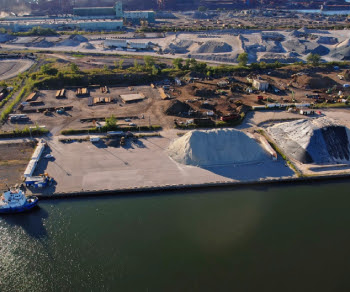WOBO appreciates the sample articles from Create Digital Engineers Australia

With time and budget constraints plus significant site issues, a one-of-a kind “jump start” technique was used to deliver a stellar urban regeneration project.
Sydney is Australia’s economic epicentre, but most of its inhabitants don’t live anywhere near the city’s harbourside central business district.
With a burgeoning workforce of 23,000 employees, there was an ever-growing need to develop a new CBD in the heart of greater Sydney – Parramatta.
Built, in joint venture with Obayashi (BOJV), was selected by Walker Corporation and Parramatta Council to deliver the project, which includes four commercial towers (4, 3 and 6&8 Parramatta Square), civic hub and public domain for the new $3.5 billion Parramatta Square precinct.
Among Australia’s largest ever urban transformations, the new precinct has ensured Parramatta is recognised as one of the most connected cities in the world, accommodating several top-tier private sector and government institutions including Property and Development NSW, the Australian Taxation Office, Australian Broadcasting Corporation, Link Market Services, Westpac, Deloitte, Endeavour Energy, NAB, and LG, said Patrick Polomka, Senior Project Manager, Walker Corporation. – au/overcoming-challenges-to-build-sydneys-second city
Ambitious wetland habitat restoration projects could usher in a bright future for natural carbon sequestration and storage.
They are Earth’s natural carbon sinks — living coastal ecosystems such as mangroves, salt marshes and seagrass beds — that can store to four times the amount of carbon compared to mature tropical rainforests.
Initiatives to restore living coastal ecosystems — collectively known as “blue carbon” — are becoming powerful weapons in the race to combat rising greenhouse gas emissions.
Not only do they sequester carbon dioxide faster than terrestrial forests and hold it for much longer, but they also protect against coastal erosion and other direct effects of climate change.
While coastal habitats cover two per cent of the ocean’s surface and store around half of the total carbon sequestered in ocean sediments, they are also some of the most threatened ecosystems on Earth.
Globally, some 90 per cent of wetlands has been lost since 1700, with around 70 per cent of destruction occurring since 1900. At the current rate of destruction, 40 per cent of the remaining tidal marshes and seagrasses could be lost over the next century, along with almost all the remaining unprotected mangroves.
Destruction of these habitats — through drought, overfishing and urban development — can be catastrophic for both the local environment and community, but it can also drive up carbon emissions. – green-light-for-blue-carbon

Four ways that mineral processing can become more sustainable
As Australia transitions towards a net zero future, there’s increasing pressure on the mining industry to move towards sustainable methods of mineral processing. Stantec’s solutions provide a viable way forward.
There’s a commonly held perception in the community that Australia’s reliance on mining is holding us back from transitioning towards a clean energy future.
But mining needs to form part of the solution going forward, says Marius Phillips, Senior Principal Consultant Minerals Processing at Stantec.
“To meet a lot of the targets for various metals – for example, demand for copper is set to double by 2035 – the mining industry will inevitably need to be part of the solution.”
Stantec’s solutions play a critical role in helping companies move towards more sustainable methods of processing minerals. This can be achieved in four primary ways: energy optimisation, reducing water consumption, reprocessing waste materials, and transitioning to alternative sources of energy. – au/mineral-processing-sustainability

